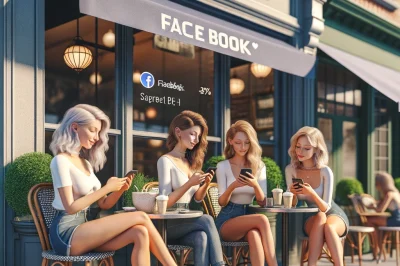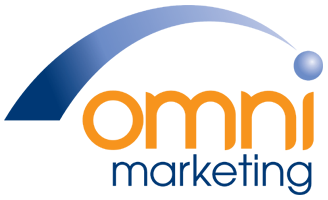Table of Contents

Key Takeaways
- Understand your local audience to create content that resonates.
- Use platforms like Facebook, Instagram, and Nextdoor to connect with the community.
- Engage with your followers through giveaways, customer spotlights, and local hashtags.
- Partner with local influencers and businesses for joint promotions.
- Track your social media performance and adapt your strategy for better results.
Understanding Your Local Market
Before you post anything, take a moment to think about who you’re trying to reach. Your local market is unique, with its own culture, events, and inside jokes. Tapping into these can make your content feel personal and relevant. So, start by doing a bit of homework:
- Chat with your customers to find out what they love about the neighbourhood.
- Attend local events to see what’s trending in your community.
- Check out local forums and social media groups to understand the local lingo and concerns.
Once you’ve got a grip on the local vibe, infuse your social media posts with this insider knowledge. It’ll show that you’re not just a business; you’re a part of the community.
Creative Content Ideas That Resonate Locally
Now, let’s turn those local insights into engaging content. For inspiration, consider integrating search engine optimisation into your content strategy to ensure your local content not only resonates with your community but also performs well in search results.
- Post about local events and how your business is involved.
- Share stories of local heroes and how they connect to your brand.
- Create posts celebrating local landmarks or traditions.
Remember, the goal is to be as relatable as possible. For example, if your town has a famous chilli cook-off every year, post a picture of your team enjoying the event with a caption like, “We can’t get enough of that #LocalChiliMagic! Who else is loving the spice today?”
Building a Foundation: Social Media Platforms You Can’t Ignore
Not all social media platforms are created equal, especially when it comes to local engagement. Here are the ones you should be focusing on:
Facebook: The Local Business Friend
Facebook is like the town square of social media for local businesses. It’s where people go to find out what’s happening nearby. Make sure your business page includes your location, hours, and services. Then, get involved in local groups and create events for your promotions or special occasions. This helps put your business right in the middle of the local conversation.
Instagram: Showcasing Your Business Visually
Instagram is all about the visuals. Use this platform to show off your products or the experience of visiting your business. High-quality photos of your offerings or behind-the-scenes looks at your operations can create a strong visual connection with potential customers. And don’t forget to geotag your posts to make them easily discoverable by locals!
Nextdoor: The Neighborhood Hotspot
Nextdoor is a community-focused platform where neighbours exchange recommendations and news. It’s a goldmine for local businesses. By setting up a business page on Nextdoor, you can tap into a network of neighbours already looking for local services and recommendations.
Google My Business: Leveraging Local SEO
While not a traditional social media platform, Google My Business is crucial for local visibility. It ensures that when people search for your type of business in your area, your name pops up. Complete your profile, encourage reviews, and regularly post updates to stay active in local search results.
Spark Engagement: Post Ideas and Strategies
Engagement is the name of the game in social media. It’s not just about broadcasting your message; it’s about starting conversations and building relationships. For some actionable insights, check out our content marketing SEO essential guide which includes strategies to get those interactions going:
Host Giveaways to Boost Followers
Who doesn’t love free stuff? Hosting a giveaway is a fantastic way to increase your social media following and engagement. Set up a simple contest with a prize that’s desirable to your local audience—maybe a product bundle or a gift card to your store. Encourage participants to like your page, share the post, and tag their friends to spread the word.
For example, a local coffee shop might post about their latest seasonal drinks and special offers.
“We’re celebrating our 5th anniversary with a giveaway! Win a week’s worth of free coffee by following us, liking this post, and tagging two friends who need their caffeine fix. The winner announced this Friday!”
Stay tuned for more insights on how to make your local business thrive on social media in the next parts of this article.
Customer Spotlights That Tell a Story
One of the most powerful ways to connect with your local audience is to shine a spotlight on your customers themselves. When you share their stories, you’re not just talking about what you sell, you’re showing the impact your business has on real people in the community. Discover how to enhance this strategy by exploring local search domination and Google My Business mastery secrets.
For instance, if you run a local gym, share a member’s fitness journey with before-and-after photos and a personal narrative. This not only celebrates their success but also humanizes your brand and inspires others. Always get permission before sharing customer stories, and when you do, it’s like giving your business a human face that’s easy for others to connect with and support.
Use Local Hashtags to Get Discovered
Hashtags are like signposts that help people find your content on social media. For local businesses, using location-specific hashtags can be a game-changer. They help you show up in searches related to your area, increasing the chances that locals will stumble upon your posts.
Do some research to see which hashtags are popular in your area. They could be as simple as #MiamiEats for a restaurant in Miami or #SeattleYoga for a yoga studio in Seattle. Also, keep an eye out for trending local events or campaigns you can tap into. For instance, if there’s a local festival, use the official hashtag to join the wider conversation.
But don’t overdo it. A good rule of thumb is to use a mix of broad and niche hashtags to reach different audiences. Two to three local hashtags per post should be enough to increase your visibility without looking spammy.
Here’s how a local bakery might leverage hashtags:
“Fresh out of the oven! Our famous blueberry muffins are ready to make your morning sweeter. Stop by and start your day with a treat. #LocalBakeryLove #CityNameSweets #FreshBaked”
Engaging Polls and Questions
Engagement isn’t just about likes and shares; it’s about sparking genuine conversations. Polls and questions are excellent tools for this. They invite your audience to share their opinions, which not only gives you valuable feedback but also helps boost your post’s visibility through increased interaction. For more insights on increasing local engagement, check out our article on leveraging the local pack of 3 strategies in content marketing.
Try asking your followers to vote on a new product flavour or to share their favourite local landmark. It shows you value their input and are willing to tailor your offerings to their preferences.
Here’s an example of how to engage your audience with a poll:
“We’re planning our next doughnut flavour and need your help! Would you prefer: A) Chocolate Hazelnut or B) Caramel Pecan? Comment below and help us decide!”
By analyzing the responses, you not only gather insights for your product development but also encourage a sense of community involvement.
Teaming Up with Local Influencers and Businesses
Collaboration can be a powerful strategy for amplifying your reach. By partnering with local influencers and other businesses, you can tap into their audiences and gain more visibility for your brand.
Start by identifying influencers who align with your brand values and have a genuine connection with their followers. Reach out with a personalized message proposing a collaboration that would benefit both parties.
Similarly, teaming up with non-competing businesses in your area for cross-promotions or events can introduce you to new customers who already support local commerce.
- Co-host an event or workshop with a complementary business.
- Run a joint giveaway where participants can win prizes from both businesses.
- Share each other’s content to show community support.
Finding the Right Local Influencers
Not all influencers are created equal, especially when it comes to local impact. Look for influencers who are active in your community, whether they’re known for their local lifestyle content, involvement in community projects, or simply their love for your city or town.
When you find potential influencers, check their engagement rates. It’s not just about follower count; you want someone who interacts with their audience and can genuinely persuade their followers to check out your business.
Once you’ve found the right match, discuss how you can work together in a way that feels authentic. Maybe they can visit your store for a special event or share their favourite product from your line. The key is to make the partnership feel natural and beneficial for everyone involved.
Launching Joint Promotions and Events
Joint promotions and events are a win-win for local businesses. They can double your reach and provide a richer experience for customers. Here’s how to make them work: consider leveraging the Local Pack of 3 strategies to maximize local visibility.
- Choose a partner whose business complements yours and whose customers might enjoy what you offer.
- Plan an event that’s exciting and unique, like a local scavenger hunt or a themed market day.
- Promote the event across all partners’ social media platforms to maximize exposure.
For example, a bookstore and a coffee shop could team up for a “Books and Brews” weekend, where customers get a discount on books with their coffee purchase and vice versa. This kind of synergy not only drives sales but also strengthens community bonds.
| Strategy | Benefits |
|---|---|
| Optimize your social media profiles | Ensure your business name, address, contact information, and other key details are accurate and consistent across all platforms |
| Create hyper-local content | Post about community events, local landmarks, and other content that resonates with your immediate geographic audience |
| Leverage user-generated content | Encourage customers to share photos, reviews, and experiences on your social channels to build social proof and engagement |
| Partner with local influencers | Collaborate with micro-influencers or community leaders who have a strong local following to expand your reach |
| Run location-targeted ads | Use the geo-targeting capabilities of social platforms to deliver ads to users within your local service area |
| Participate in local social groups | Join and engage with Facebook groups, Nextdoor, or other local online communities relevant to your business |
| Promote local events and offers | Showcase any in-store promotions, events, or other time-sensitive updates to drive foot traffic and sales |
| Monitor and respond to reviews | Promptly address both positive and negative feedback to build trust and reputation within your local market |
| Analyze performance and iterate | Use social media analytics to track key metrics like engagement, reach, and conversions, then adjust your strategy accordingly |
Monitoring and Adapting: Analytics for Success
What’s working? What’s not? The only way to know for sure is to keep an eye on your social media analytics. These tools tell you which posts are hitting the mark with your audience and which ones are missing the target.
Pay attention to metrics like engagement rates, click-through rates, and follower growth. These numbers will show you whether your content is resonating with your local audience and driving the actions you want.
Understanding Social Media Metrics
Metrics can be intimidating, but they’re essential for refining your social media strategy. Here’s a quick rundown:
- Engagement: Likes, comments, shares, and saves indicate how much your audience is interacting with your content.
- Reach: The number of unique users who see your post. High reach means you’re getting in front of new eyes.
- Click-Through Rate (CTR): The percentage of people who click on a link in your post. A high CTR means your call-to-action is effective.
By regularly reviewing these metrics, you can adjust your content strategy to do more of what works and less of what doesn’t. For example, if you notice that posts featuring customer testimonials get more engagement, make them a regular feature on your page.
Remember, social media for local businesses is about building relationships. It’s not just about selling products; it’s about creating a community around your brand. Stay tuned for the final part of this guide, where we’ll cover how to turn that engagement into sales and navigate common social media pitfalls.
Adjusting Your Strategy Based on Insights
Insights from analytics are powerful, but they only make a difference if you act on them. Let’s say you notice that posts with local landmarks get a lot of engagement. Capitalize on that by featuring more local spots or even collaborating with local artists to depict them. Adapt your content calendar based on what your audience loves, and don’t be afraid to experiment with new ideas that the data supports.
From Likes to Leads: Converting Engagement into Sales
Engagement is great, but at the end of the day, your business needs sales to survive. So, how do you bridge the gap between likes and leads? It’s all about making it easy for followers to become customers.
Effective Calls to Action
Every post should have a purpose. Sometimes, it’s to inform or entertain, but when it comes to driving sales, you need a clear call to action (CTA). Whether it’s “Shop Now,” “Book Today,” or “Visit Us,” your CTA should be direct and easy to follow. Use buttons and links on platforms like Instagram and Facebook to streamline the process from post to purchase.
Exclusive Deals for Social Media Followers
Offering exclusive deals to your social media followers is a great way to thank them for their support and encourage them to make a purchase. It could be a discount code, a special bundle, or early access to a new product. Make sure the offer is enticing and time-sensitive to create a sense of urgency.
For example, a post might say:
“This weekend only! Show us that you follow our page and get 10% off your meal. It’s our way of saying thanks for being part of our social media family. #LocalEats #FoodieFriday”
Common Pitfalls and How to Avoid Them
Even with the best intentions, there are common traps that can trip up local businesses on social media. Let’s look at how to avoid them.
Overpromotion and How to Balance Content
Constantly pushing sales can turn followers off. The key is to balance promotional content with posts that educate, entertain, or inspire your audience. Follow the 80/20 rule: 80% of your content should add value in some way, while only 20% should be directly promotional.
Ignoring Negative Feedback: The Right Way to Respond
Negative feedback is inevitable, but it’s not the end of the world. Respond promptly, apologize if necessary, and offer a solution. This shows that you’re attentive and committed to customer satisfaction. Remember, a well-handled complaint can improve your reputation.
Frequently Asked Questions
How often should a local business post on social media?
Consistency is key. Aim to post at least 3-4 times a week to stay on your audience’s radar, but don’t sacrifice quality for quantity. It’s better to post less frequently with great content than to post often with content that doesn’t engage your audience.
What kind of content works best for local businesses?
Content that showcases your involvement in the community, highlights customer stories, and shares the uniqueness of your local area tends to perform well. Authenticity resonates with audiences, so keep it real and relevant.
Can social media engagement directly lead to sales?
Absolutely. When done right, high engagement on social media can increase brand awareness, build trust, and create a loyal customer base—all of which can lead to more sales. Use insights from your engagement to refine your sales strategies.
How can I measure the ROI of my social media efforts?
Tracking ROI involves looking at the goals you set for your social media campaigns, whether it’s increased foot traffic, website visits, or sales. Use tools like Google Analytics and social media platform insights to track conversions and attribute them to your social media activities.
Is it necessary to use paid advertising on social media?
While not strictly necessary, paid advertising can significantly increase your reach and target specific demographics more effectively than organic posts. Consider allocating a portion of your marketing budget to social media ads, especially for promotions or important announcements.
- Affordable Marketing Solutions: The Swansea Small Business Growth Plan Under £500/Month – 15 May 2025
- AI in Accounting Marketing: Leveraging Technology for Client Acquisition – 15 May 2025
- The Essential Legal Content Management System: Organize Your Thought Leadership for Maximum Impact – 14 May 2025






